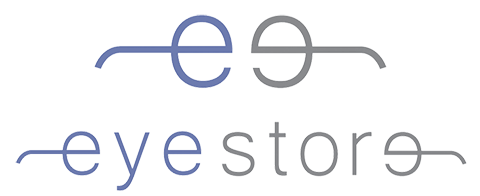
Orthokeratology, commonly called ortho-k, is a method used to correct myopia (nearsightedness) or astigmatism by wearing rigid gas permeable contact lenses overnight, so that no corrective lenses are needed during daytime hours.
Ortho-k has also been shown to reduce the rate of myopia progression, so if you or your child are concerned about worsening myopia, these lenses might be beneficial.
Gas permeable (GP) lenses specialised for ortho-k are placed on the eyes at bedtime and worn as you sleep. Throughout the night, the lenses reshape your cornea gently so that your vision becomes clear on the following morning, without the use of your regular eye wear. The correction is temporary and ideally no glasses or contact lenses will be needed on the next day or two. In order to maintain sharp visual acuity on a daily basis, you need to wear the ortho-k reshaping lenses at night.
At present, three brands of orthokeratology contact lenses are approved for use by the TGA. Euclid Emerald, usually prescribed for myopia control, Paragon Vision Sciences, who produces “Corneal Refractive Therapy” (CRT) and Bausch and Lomb, who manufactures “Vision Shaping Treatment” (VST).
Candidates for Ortho-k
Ortho-k is very suitable for nearsighted people who are not appropriate candidates for laser vision correction surgery, such as children and young adults up to age of 21. Individuals of all ages with healthy eyes can try ortho-k, namely because it can be discontinued at any point without permanent effects to the eyes.
If you require vision correction and engage regularly in sports or work in extremely dusty, dirty environments you may appreciate the convenience of ortho-k.
Vision Results from Orthokeratology
Success rates for ortho-k are generally higher for more mild vision prescriptions. The ideal goal is to provide 20/20 vision without any need for glasses or contact lenses during the day.
According to FDA trials conducted in the USA on both CRT and VST lenses, more than 65% of ortho-k patients achieved 20/20 visual acuity. A whopping number of more than 90% of ortho-k patients achieved 20/40 vision or better, this is the legal requirement for driving without vision correction in most states. Consult with your optometrist to find out if your vision prescription is within range for successful ortho-k treatment.
Note that although improvement in vision is generally reported within a day or two of wearing ortho-k overnight, the full effects may not be experienced until the lenses are worn for a few days or weeks. During this transition period, your vision will probably not be as crisp as it was with regular contacts or glasses and glare or halos around lights may be visible. During this time, a temporary pair of contact lenses or glasses may be required for specific actions, such as driving at night.
How Does Ortho-k Feel?
Although some people have trouble wearing regular gas permeable contact lenses during the day, ortho-k RGP lenses are worn while sleeping – so discomfort and awareness of the lenses in your eyes is generally not an issue.
Is Ortho-k expensive?
Professional fitting for ortho-k requires a series of visits to your optometrist, to ensure the optimum results are achieved, and sometimes the optometrist might adjust or exchange the lenses. RGP lenses that are special for ortho-k are more initially costly than standard contacts and there are additional consultation fees for ortho-k, but the benefits can significant improve your quality of life.
LASIK after Ortho-k
Even though ortho-k is a non-surgical alternative to laser refractive surgeries, such as LASIK, PRK and SMILE, these vision correcting laser surgeries are still possible after you have used ortho-k lenses. As ortho-k works by reshaping your cornea, patients are required to stop wearing their lenses for up to several days or weeks before undergoing consultations for LASIK. This allows your eyes to return to their original shape.
It’s important to inform your eye surgeon if you’ve been wearing ortho-k lenses and you will be advised as to how long of a wait is necessary before your LASIK consultation to discuss this laser procedure.
